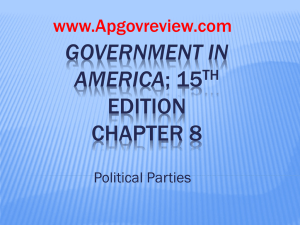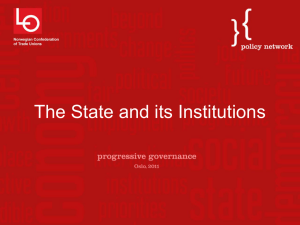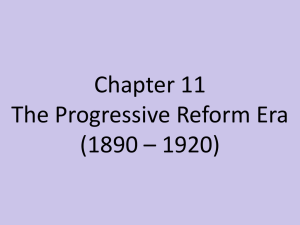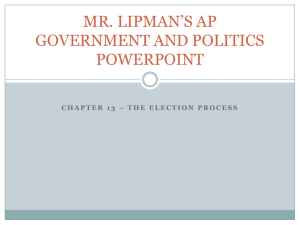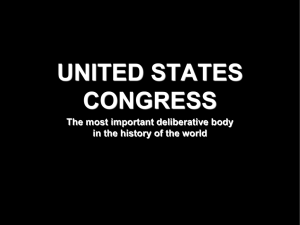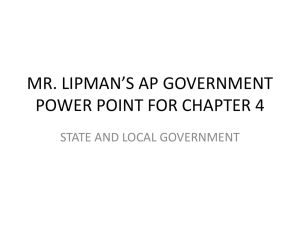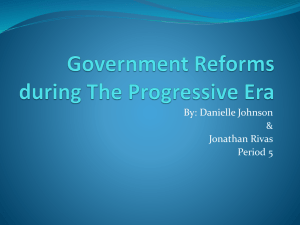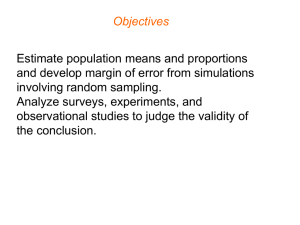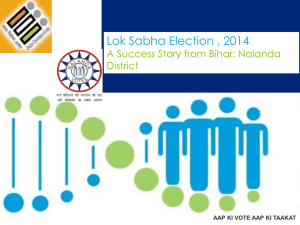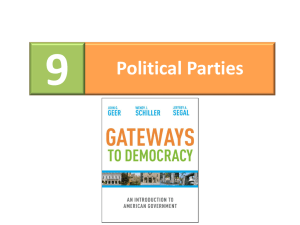Lecture 21
advertisement
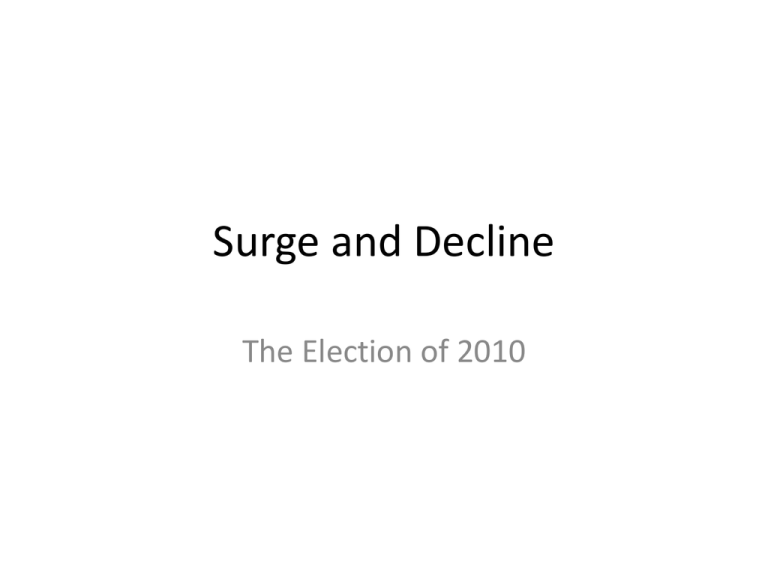
Surge and Decline The Election of 2010 Clearly Stated Learning Objectives • Understand the decision making process for why people vote as they do and how this changes over time. • Evaluate and interpret the importance of partisanship in shaping political opinion and vote choice • Analyze the theories of why people vote and apply them to the 2010 Election. A Historical Perspective The Presidential Surge • The President pulls candidates along with him – 1980, 2008, 1964 • In a worst-case, he breaks even – 1984, 1996, 2004 The Midterm Decline • The President’s Party Loses Seats • They Take a bigger hit in the 6th Year • 1934, 1998, and 2002 The Role of Midterm elections • A referendum on the president • A referendum on the economy WHO VOTES IN THE MIDTERM A Different Electorate A Different Electorate • More Partisans • Less people there to support the president • Less salient election Congressional vote for candidate of winning presidential party Withdrawn Coattails 50% Coattail effect Non-coattail effect Presidential Election Non-coattail effect Midterm Election Core vs. Peripheral Voters THE OLD THEORY OF SURGE AND DECLINE Types of Voters • Core Voters • Peripheral voters It is all about Peripheral Voters • A Surge of Independent Voters • Excited by the salience of the election A Surge of Information • Peripheral voters go to the polls • The information surge favors the winning candidate In the Midterm • The peripherals stay at home resulting in lower turnout • The Core voters turn out Problems with the original theory • The Midterm and presidential electorates are similar demographically • The partisan differences aren’t that much different • Peripherals are not running the show! THE REVISED THEORY The Disadvantaged Partisan • More Likely to abstain than defect • Cross Pressured Winners and Losers • In the General election – Surge among the advantaged party – Decline among the losing party • A One Sided Surge In the Midterm • Partisans Stay at Home • So do Peripherals In the Midyear • The president’s party stays at home • The Out- party comes out to vote against you. • No Cross-pressures The Big Differences in the Theory • Advantaged Partisans Turn out Heavy • Disadvantaged Partisans stay at Home • Independents turn out like usual, but swing to the wining party. LEADING FACTORS OF A MIDTERM LOSS How You Know it is going to bad • Exposure and Coattails • Presidential Approval • Economic Growth The Elections of 2010 The Obama Dichotomy • President Obama had a record of achievement not seen since LBJ. • Each of these achievements produced positive and negative political consequences. Health Care Reform • Policy Success – The largest accomplishment of the administration • Policy Problems – Spent Political Capital – Delayed Implementation Opinion Remained Divided The Stimulus Package • Success – Potentially Staved off a second depression • Problems – High Price Tag – Did not meet expectations Voters were Split on its Effectiveness War on Terror Successes in Iraq Problems in Afghanistan – More U.S. deaths in two years of Obama Administration than in 8 years of Bush Administration • Support Remains Divided Financial Reform Bill Success – The most sweeping bank reform since the Great Depression Problems – Critics on the Left say it didn’t Go Far Enough – Economy has not rebounded Obama Shares the Blame President Obama’s Policy Disconnect • Major Policies did not directly affect ordinary voters in a meaningful way • Many Voters viewed these major policies as halfempty, not half-full
